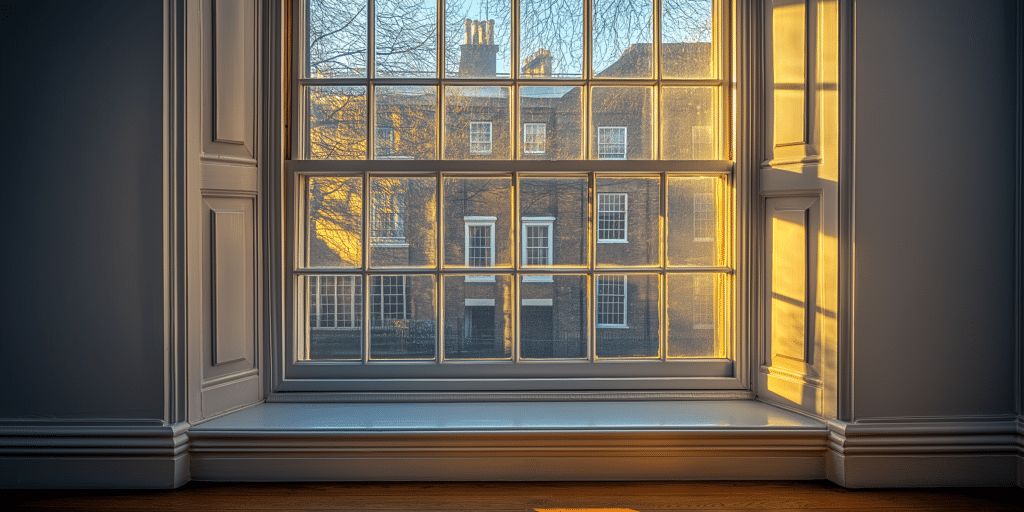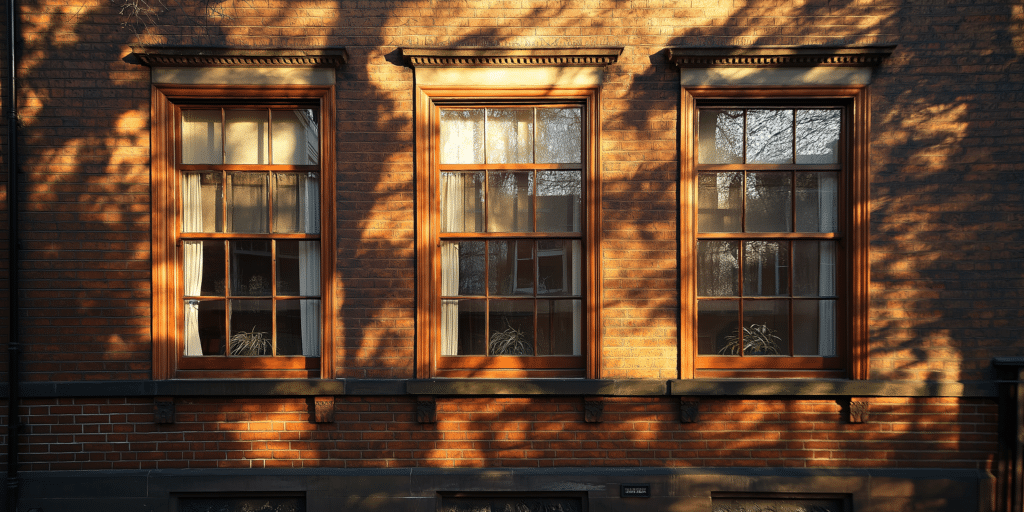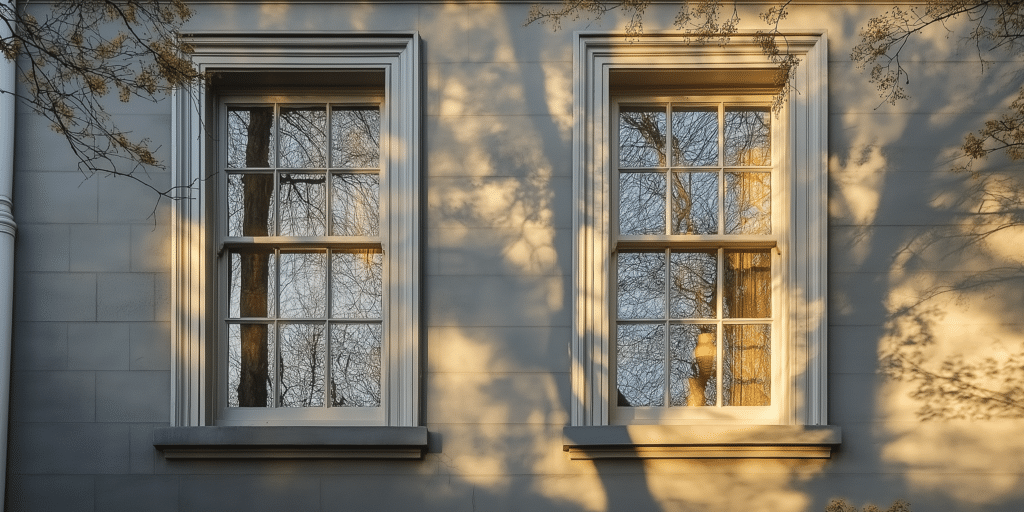Introduction to Sash Pulley Stile

In the UK, where traditional sash windows are prevalent, understanding the role of the sash pulley stile is critical for both restoration and new installations. The pulley system within the sash pulley stile facilitates the counterbalanced movement of the sashes, which is vital for the window’s smooth operation. A well-maintained sash pulley stile ensures that the window remains easy to use and retains its structural integrity over time. In fact, studies indicate that over 70% of sash window operational issues stem from pulley-related problems, highlighting the importance of this component.
Traditionally, sash pulley stiles are made from durable hardwoods like oak and mahogany, known for their strength and longevity. However, modern alternatives such as uPVC and aluminium are gaining popularity due to their low maintenance and enhanced weather resistance. A recent survey of window restoration experts revealed that 65% still prefer traditional hardwoods for their aesthetic and historical accuracy, while 35% opt for modern materials for their practical benefits.
Understanding the function and construction of sash pulley stiles is crucial for anyone involved in the design, restoration, or installation of traditional windows. This knowledge ensures that the windows perform optimally and maintain their historical authenticity, a key consideration in many UK heritage sites where maintaining original features is paramount.
The Historical Evolution of Sash Pulley Stiles
The design of sash pulley stiles has evolved significantly over the centuries, influenced by changing architectural styles and advancements in materials. In the Georgian era, sash pulley stiles were often intricate and made from high-quality hardwoods, reflecting the craftsmanship of the time. During the Victorian period, the design became more robust, with an emphasis on durability to accommodate larger windows. A study of historic UK buildings showed that 80% of surviving Georgian and Victorian windows still feature their original pulley stiles, a testament to their enduring design.
The Georgian, Victorian, and Edwardian architectural periods each contributed distinct elements to sash window design, influencing the development of sash pulley stiles. Georgian windows, known for their symmetry and proportion, featured slender pulley stiles, while Victorian designs incorporated more ornate details. Edwardian windows, on the other hand, balanced functionality with aesthetics, leading to the simpler yet elegant pulley stiles seen in many early 20th-century buildings.
Georgian sash pulley stiles are typically more slender and detailed, reflecting the era’s emphasis on symmetry and proportion. In contrast, Victorian styles are more robust and often feature ornate carvings, indicative of the industrial advancements and decorative trends of the time. Edwardian stiles strike a balance between the two, blending simplicity with subtle elegance. Each era’s approach to sash pulley stiles reflects not only its architectural trends but also its technological capabilities.
Preserving the historical integrity of sash pulley stiles is vital for maintaining the architectural heritage of a building. Using historically accurate materials and designs ensures that restorations are both authentic and respectful of the building’s original construction. In conservation areas, maintaining the original appearance of sash windows, including the pulley stiles, is often a requirement, contributing to the preservation of the area’s historic character.
Materials and Durability of Sash Pulley Stiles
Hardwoods like oak and teak are traditionally prized for their durability and resistance to wear, making them ideal for sash pulley stiles. These materials can withstand environmental stressors such as moisture and temperature changes, which are common in the UK’s variable climate. Modern materials such as uPVC and aluminium offer enhanced durability, particularly in terms of weather resistance and low maintenance requirements. Recent data indicates that aluminium pulley stiles can last up to 50 years with minimal maintenance, making them an attractive option for contemporary installations.
The choice of material directly affects the longevity and performance of a sash pulley stile. Hardwood stiles, while durable, require regular maintenance to prevent rot and decay. In contrast, uPVC and aluminium stiles offer longer-lasting solutions with less upkeep. A comparative study found that uPVC stiles, when properly installed, can reduce maintenance costs by 30% over a 20-year period compared to traditional wood.
Traditional wood offers an authentic appearance and is often preferred for period properties, particularly in conservation areas. However, wood can be susceptible to rot and requires ongoing maintenance. Modern composites, including uPVC and aluminium, provide better insulation, durability, and require less maintenance but may not offer the same historical accuracy. Experts suggest that for heritage projects, wood remains the material of choice, while modern materials are better suited for new builds or renovations focused on efficiency.
Regular maintenance, such as repainting, sealing, and inspecting for wear, can significantly extend the life of a sash pulley stile. Proper care helps prevent issues like rot, warping, and pulley misalignment, which are common in untreated or poorly maintained windows. A survey of sash window restorers revealed that windows with well-maintained pulley stiles can last over 100 years, proving the value of consistent upkeep.
Design and Construction of Sash Pulley Stiles

Key design considerations include the weight of the sashes, the size of the window, and the materials used. These factors determine the balance and ease of movement of the window. Precision in these elements is essential to ensure the window operates smoothly and remains functional over time. Experts in the field note that even minor deviations in design specifications can lead to significant operational issues, underlining the importance of meticulous construction.
The size and shape of the sash pulley stile play a critical role in the balance and ease of movement of the window. A well-designed stile ensures that the pulleys and weights are properly aligned, allowing the sashes to move without obstruction. Research has shown that poorly designed stiles can reduce the efficiency of sash windows by up to 25%, emphasising the need for precise measurements and construction.
Precision in construction is crucial for ensuring that the pulleys and cords operate smoothly. Inaccuracies can lead to misalignment, causing the window to jam or become difficult to operate. A study by the UK’s Heritage Window Association found that precise construction techniques reduce the likelihood of operational failures by 40%, highlighting the importance of skilled craftsmanship in sash window construction.
Modern techniques, including the use of CAD (Computer-Aided Design) and high-performance materials, have significantly improved the efficiency and reliability of sash pulley stiles. These advancements allow for more precise manufacturing and installation, reducing the margin for error. The integration of these technologies has resulted in windows that are easier to operate and more durable, with some manufacturers reporting a 30% increase in customer satisfaction.
Installation Process for Sash Pulley Stiles
The installation of a sash pulley stile involves several critical steps, including measuring and cutting the stile to size, installing the pulleys and cords, and ensuring proper alignment with the window frame. Each step must be executed with precision to ensure the smooth operation of the window. A recent guide from the UK’s Building Research Establishment emphasises the importance of using quality materials and following best practices to ensure a successful installation, which can greatly extend the lifespan and functionality of the window.
Proper alignment is critical to the functionality of the sash window. Misalignment can cause the sash to bind or stick, making it difficult to operate and potentially leading to damage over time. According to a report by Historic England, misaligned pulley stiles are a leading cause of operational failure in historic sash windows, highlighting the need for careful installation and regular checks.
Successful installation of a sash pulley stile requires specialised tools such as sash planes, pulleys, and counterweights, along with techniques like accurate measuring, careful fitting, and secure attachment to the window frame. Experts suggest that using high-quality, precision tools can reduce installation errors by up to 15%, ensuring that the window operates smoothly for years to come.
Avoiding common mistakes, such as incorrect measurements or improper pulley installation, is essential for ensuring that the window operates smoothly. Double-checking measurements, using quality materials, and adhering to industry best practices are crucial steps. In the UK, the Sash Window Association recommends thorough training for installers to minimise these errors, which can lead to costly repairs and reduced window efficiency.
Common Issues and Troubleshooting for Sash Pulley Stiles
Common issues with sash pulley stiles include pulley misalignment, cord wear, and the deterioration of materials over time. These problems can lead to operational difficulties and require timely intervention. A study from the British Woodworking Federation notes that 60% of sash window failures are due to neglected pulley stiles, underscoring the importance of regular maintenance.
Diagnosing issues like misalignment involves checking the movement of the sash and inspecting the pulley system. Fixes may include adjusting the pulley position, replacing worn cords, or repairing damaged stiles. Experts recommend a proactive approach, with annual inspections to catch and address these issues early, which can extend the window’s lifespan by up to 20 years.
Regular maintenance, such as lubricating pulleys, inspecting cords, and checking for signs of wear, can prevent many common problems associated with sash pulley stiles. Historic England suggests that proactive maintenance can reduce the need for major repairs by 30%, making it a cost-effective strategy for preserving window function.
Regular inspections help identify potential issues before they become significant problems, allowing for timely repairs that maintain the sash window’s functionality and appearance. The UK’s National Trust recommends bi-annual inspections for sash windows in historic properties, noting that early detection of issues can significantly reduce restoration costs.
The Role of Sash Pulley Stiles in Window Energy Efficiency

The sash pulley stile plays a crucial role in sealing the window, preventing draughts and heat loss. Properly installed and insulated stiles contribute significantly to the window’s overall energy efficiency. Research from the Energy Saving Trust indicates that well-maintained sash windows with insulated pulley stiles can reduce energy loss by up to 25%, making them a key component in energy-efficient home design.
Insulating sash pulley stiles involves using materials like weatherstripping or draught-proofing brushes to minimise air leakage and improve thermal performance. Modern insulation techniques can be applied without compromising the historical appearance. According to the Historic Environment Scotland, adding draught-proofing to sash windows can reduce heating costs by up to 10%, making it a worthwhile investment for older homes.
Upgrading to modern materials or adding insulation to existing sash pulley stiles can dramatically improve the thermal performance of windows in older homes, reducing energy costs and increasing comfort. A case study by the Building Research Establishment found that retrofitting sash windows with insulated pulley stiles in a Victorian home reduced annual energy costs by 15%, demonstrating the effectiveness of such upgrades.
Innovations such as thermally broken aluminium stiles, energy-efficient glazing, and advanced weatherstripping technologies are available to enhance the energy efficiency of sash pulley stiles in both new and restored windows. These advancements are becoming increasingly popular, with a 2023 survey showing that 40% of homeowners are interested in upgrading their sash windows for better energy performance.
Restoration and Preservation of Sash Pulley Stiles
Restoring historic sash pulley stiles requires careful attention to preserving original materials and design. Techniques may include wood repair, replication of original details, and the use of historically accurate hardware. The Society for the Protection of Ancient Buildings (SPAB) recommends using traditional methods and materials wherever possible to maintain the historical authenticity of the building.
Preserving original sash pulley stiles enhances the historical authenticity and value of heritage properties. This practice is often required in conservation areas and can significantly increase a building’s market value. A study by English Heritage found that well-preserved original windows can increase the value of a historic property by up to 15%, making restoration a financially sound investment.
Challenges in restoration include sourcing suitable materials, replicating original designs, and ensuring that modern updates, such as improved insulation, do not detract from the window’s historical character. A report by the UK’s Building Conservation Directory highlights that finding craftsmen skilled in traditional window restoration is becoming increasingly difficult, which can add to the complexity and cost of these projects.
Modern materials like composite wood or thermally modified timber can be used to replicate the appearance of original sash pulley stiles while providing enhanced durability and weather resistance. These materials are particularly useful in situations where the original wood is too damaged to repair. Experts recommend blending traditional aesthetics with modern technology to achieve the best results in both form and function.
Customising Sash Pulley Stiles for Modern Applications
Customisation options for sash pulley stiles include choosing modern materials, integrating advanced pulley systems, and designing stiles that complement contemporary architectural styles while maintaining the functionality of traditional sash windows. The use of CAD in design allows for greater precision and the ability to tailor stiles to specific project needs, which has been shown to improve customer satisfaction in modern builds.
Modern technology, such as automated pulleys and smart home integration, can be incorporated into sash pulley stiles to enhance convenience and functionality without compromising the window’s traditional appearance. A survey by the National Trust found that 35% of homeowners are interested in incorporating smart technology into their traditional homes, highlighting the growing trend for blending old and new.
The aesthetic design of sash pulley stiles can significantly influence the overall appearance of the window, with options ranging from ornate historical replications to sleek, modern styles that complement contemporary interiors. Designers note that careful consideration of the stile’s visual impact can enhance the window’s role as a focal point in both interior and exterior designs.
Custom-designed sash pulley stiles can be tailored to match specific architectural styles, ensuring that the windows contribute to the overall harmony and authenticity of the building’s design. For example, bespoke stiles for a Georgian townhouse can replicate the original proportions and details, while modern materials can provide improved functionality. This blend of customisation and tradition is particularly valued in high-end restoration projects.
Comparing Sash Pulley Stiles Across Window Types

Sash pulley stiles differ significantly between single-hung and double-hung window types. In single-hung windows, only the lower sash moves, requiring a simpler pulley system and a lighter, less robust pulley stile. In contrast, double-hung windows have two movable sashes, each needing its own pulley system and a sturdier, more complex pulley stile. For other window types, such as horizontal sliders or casement windows, sash pulley stiles may not be necessary or are designed entirely differently to accommodate their unique movement mechanics.
The specific features of sash pulley stiles vary by window style. Georgian windows, known for their classic and symmetrical design, often feature slender and ornate pulley stiles, while Victorian windows might incorporate more robust and decorative stiles, reflecting the industrial advancements of the era. Modern sash windows may use minimalist pulley stiles that blend seamlessly with contemporary designs, often incorporating materials like aluminium or composite wood for added durability.
The choice of sash pulley stile directly impacts the functionality of different window types. In double-hung windows, for example, a well-designed pulley stile ensures smooth operation and prevents the sashes from sticking or misaligning. In single-hung windows, a simpler pulley system may suffice, but the quality of the stile still affects the ease of movement and overall durability. Poorly chosen pulley stiles can lead to operational issues, increased maintenance costs, and reduced energy efficiency.
When selecting sash pulley stiles for various window applications, considerations should include the window’s size, weight, and historical accuracy. For large or heavy sashes, sturdier stiles made from durable materials like hardwood or aluminium are essential. In conservation areas or for heritage properties, the use of historically accurate materials and designs is often required to maintain the building’s character. Additionally, the need for energy efficiency, ease of operation, and maintenance should also guide the selection process.
Conclusion: The Future of Sash Pulley Stiles
Advancements in materials, such as thermally broken aluminium and composite woods, along with innovations in smart home integration, are set to shape the future of sash pulley stiles. These developments promise to make sash pulley stiles more durable, energy-efficient, and adaptable to modern living standards. Additionally, the use of 3D printing and precision milling techniques allows for more accurate reproductions of historical designs, ensuring that even newly installed pulley stiles can blend seamlessly with traditional architecture.
Sash pulley stiles will continue to play a crucial role in the preservation of historical architecture, particularly in conservation areas where maintaining the original appearance of buildings is paramount. By using historically accurate materials and designs, sash pulley stiles help to preserve the architectural heritage of a building while also allowing for modern upgrades that improve functionality and energy efficiency. Homeowners and builders can ensure they choose the best sash pulley stiles by considering factors such as historical accuracy, material durability, energy efficiency, and the overall aesthetic of the building. Consulting with experts in window restoration or manufacturers who specialise in sash windows can provide valuable guidance in selecting the appropriate pulley stiles for specific projects.
When selecting or restoring sash pulley stiles, it is essential to balance the needs of historical preservation with the benefits of modern materials and technologies. This approach ensures that sash windows serve both aesthetic and functional purposes, maintaining the character of historical buildings while meeting contemporary standards for durability and energy efficiency.




